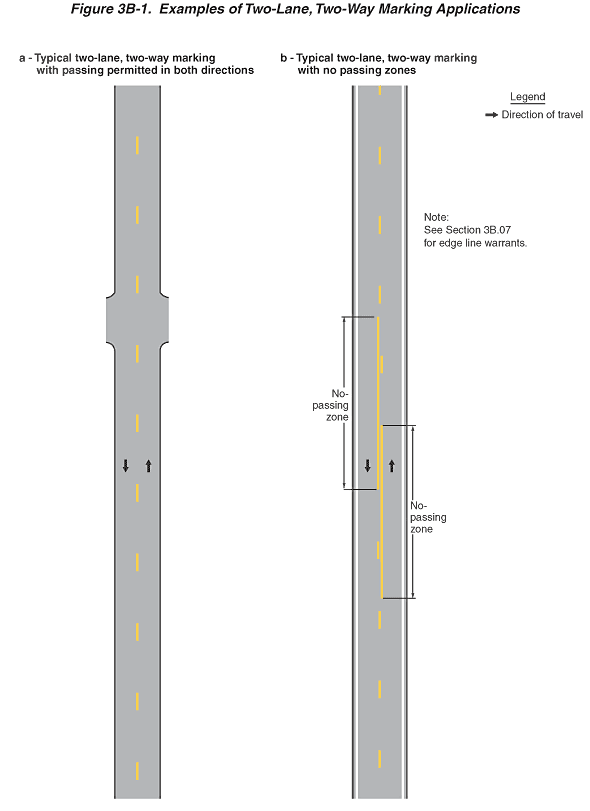|

Figure 3B-1. Examples of Two-Lane, Two-Way Marking Applications
This figure illustrates two examples of two-lane, two-way pavement
marking applications on roadways.
Two vertical roadways are shown, (a) and (b):
- Example (a) shows "typical two-lane, two-way marking with
passing permitted in both directions." A two-lane roadway
is shown with a centerline marking of a broken yellow line. Arrows
show that the direction of travel is one lane in each direction.
- Example (b) shows "typical two-lane, two-way marking with
no-passing zones." A two-lane roadway is shown with centerline
markings of (from the top to the bottom of the figure): a single
broken yellow line; a solid yellow line adjacent to the left lane
and a broken yellow line adjacent to the right lane; a double
solid yellow line; a broken yellow line adjacent to the left lane
and a solid yellow line adjacent to the right lane; and a single
broken yellow line. In the middle of the figure, each section
of solid yellow line, which overlaps in the section having a double
solid yellow line, is marked as a "no-passing zone."
A solid white line is marked on the outside edge of each lane.
Arrows show that the direction of travel is one lane in each direction.
A legend shows a black arrow indicating the direction of travel
in the lanes.
A note indicates "See Section
3B.07 for edge line warrants."
Back
to Chapter 3B
|

